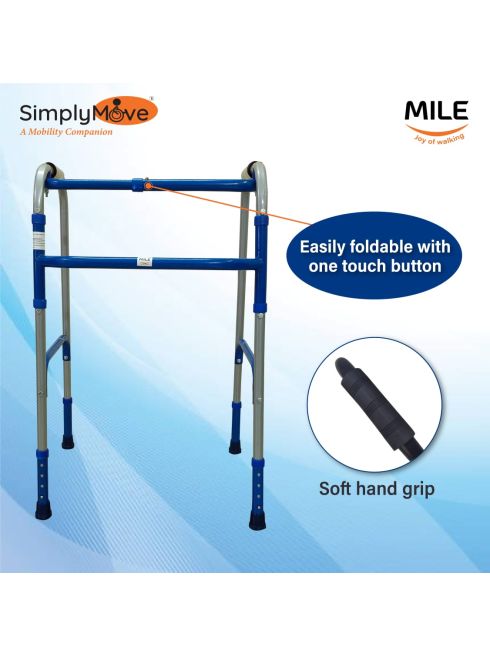The workplace should be a space of opportunity, growth, and inclusion for everyone. However, for employees with disabilities, it often presents unique challenges that can hinder their ability to fully participate and thrive. Understanding these challenges is the first step toward creating a more inclusive environment. This article explores the obstacles faced by individuals with disabilities in the workplace, including lack of accessibility, limited accommodations, difficulty with retirement planning, and workplace bias, while emphasizing the importance of fostering inclusivity.
Lack of Accessibility
Accessibility remains one of the most significant barriers for employees with disabilities. Despite legal mandates like the Americans with Disabilities Act (ADA), many workplaces still fail to provide adequate physical and digital accessibility. This shortfall can manifest in several ways:
- Physical Barriers: Inaccessible office layouts, such as narrow doorways, lack of elevators, or improperly equipped restrooms, can prevent individuals with mobility impairments from navigating the workspace effectively.
- Technological Barriers: Digital tools and platforms that are not designed with accessibility in mind create obstacles for employees with visual, auditory, or cognitive disabilities. For instance, software that lacks screen reader compatibility or websites without proper alt text can limit productivity.
- Transportation Challenges: Even reaching the workplace can be difficult if public transportation or parking facilities are not accessible.
Addressing these issues requires a proactive approach, including regular accessibility audits, employee feedback, and investment in accessible infrastructure and technology.
Limited Accommodations
Providing reasonable accommodations is a crucial part of supporting employees with disabilities. Unfortunately, many workplaces either lack awareness of these needs or fail to implement accommodations effectively. Common issues include:
- Insufficient Flexibility: Rigid work schedules or policies can disadvantage employees with disabilities who may require flexibility for medical appointments or energy management.
- Inadequate Assistive Tools: The absence of necessary equipment, such as ergonomic workstations, wheelchairs, speech-to-text software, or sign language interpreters, can hinder job performance.
- Reluctance to Disclose Needs: Fear of stigma or negative repercussions may lead employees to avoid requesting accommodations altogether.
Employers can address these challenges by fostering a culture of openness, providing training for managers on accommodation processes, and ensuring employees feel safe to voice their needs.
Difficulty with Retirement Planning
Employees with disabilities often face unique hurdles when planning for retirement. These challenges stem from a combination of financial, social, and systemic factors:
- Lower Earnings: On average, individuals with disabilities tend to earn less than their non-disabled peers, limiting their ability to save for retirement.
- Additional Expenses: Disability-related costs, such as medical care, assistive devices, and transportation, can deplete savings that might otherwise be allocated for retirement.
- Limited Access to Benefits: Some employees with disabilities rely on government programs like Social Security Disability Insurance (SSDI), which may complicate their transition to retirement benefits.
- Inadequate Financial Education: A lack of tailored financial planning resources for employees with disabilities can make it difficult to navigate retirement savings options and tax advantages.
Employers can play a role in easing these difficulties by offering accessible financial planning tools, hosting retirement planning workshops, and ensuring that benefit packages address the unique needs of employees with disabilities.
Workplace Bias and Discrimination
Bias and discrimination remain pervasive issues that can undermine the confidence and opportunities of employees with disabilities. These challenges often manifest in subtle and overt ways, including:
- Hiring Bias: Preconceived notions about an individual’s capabilities may lead to fewer job offers or limited roles for employees with disabilities.
- Limited Advancement Opportunities: A lack of mentorship, training, or promotions can prevent employees with disabilities from reaching their full potential.
- Microaggressions: Offhand comments or assumptions, such as questioning an employee’s abilities or treating them differently, contribute to a hostile work environment.
- Exclusion from Workplace Culture: Employees with disabilities may feel isolated if workplace activities, such as team-building events, are not inclusive.
Combatting workplace bias requires comprehensive diversity and inclusion initiatives, including bias training, equitable hiring practices, and efforts to ensure all employees feel valued and respected.
Importance of Inclusive Environments
Creating an inclusive workplace benefits everyone, not just employees with disabilities. Inclusivity fosters innovation, boosts morale, and enhances organizational reputation. Here are some ways to build a more inclusive work environment:
- Commitment from Leadership: Inclusion starts at the top. Leaders should actively promote diversity and ensure that policies reflect this commitment.
- Universal Design Principles: Adopting universal design principles in physical spaces and technology ensures that environments are accessible to all employees, regardless of ability.
- Comprehensive Training Programs: Providing education on disability awareness and inclusion helps dismantle stereotypes and encourages empathy among colleagues.
- Feedback Mechanisms: Regularly soliciting feedback from employees with disabilities ensures that their voices are heard and their needs are addressed.
Building Awareness and Educating Teams
One of the most effective ways to address the challenges faced by employees with disabilities is through awareness and education. Employers and colleagues often lack understanding of the barriers that people with disabilities encounter, both in and out of the workplace. Comprehensive education initiatives can create a more supportive and inclusive environment. Key strategies include:
- Workshops and Seminars: Hosting regular training sessions on disability awareness can foster a culture of empathy and understanding. These sessions can cover topics like proper language use, understanding invisible disabilities, and the importance of accessibility.
- Interactive Simulations: Allowing employees to experience simulated barriers, such as navigating a space in a wheelchair or using assistive technology, can build empathy and highlight areas for improvement in the workplace.
- Mandatory Bias Training: Ensuring that all employees and managers undergo training to recognize and address implicit biases can help dismantle stereotypes that often hinder the progress of employees with disabilities.
Education initiatives should be ongoing and updated regularly to reflect best practices and evolving standards of inclusivity.
Expanding Legal and Policy Support
While regulations like the ADA have significantly advanced workplace accessibility, there is still room for improvement. Strengthening legal frameworks and internal policies can provide greater support for employees with disabilities. Employers can:
- Go Beyond Minimum Standards: Aim to exceed legal requirements by implementing policies that proactively support inclusion, rather than merely complying with the law.
- Establish Disability Advocacy Committees: Create internal committees to advocate for employees with disabilities, review policies, and suggest improvements.
- Update Anti-Discrimination Policies: Regularly review and strengthen anti-discrimination policies to address gaps and ensure they reflect the unique challenges faced by employees with disabilities.
A robust policy framework not only protects employees but also reinforces an organization’s commitment to inclusivity.
Leveraging Technology for Inclusion
Advancements in technology offer incredible opportunities to bridge accessibility gaps for employees with disabilities. Integrating innovative tools and solutions can significantly enhance the workplace experience. Examples include:
- Assistive Technologies: From screen readers and voice recognition software to ergonomic keyboards and adaptive communication devices, assistive technologies empower employees to perform tasks efficiently.
- Accessible Digital Platforms: Ensure that company websites, intranets, and software systems are designed with accessibility in mind, incorporating features like alt text, high contrast modes, and keyboard navigation.
- Remote Work Options: For employees with disabilities who face challenges commuting or navigating physical office spaces, remote work provides flexibility and enables full participation.
Employers should actively seek input from employees with disabilities to determine which technologies would be most beneficial for their specific needs.
Promoting Leadership Opportunities
Employees with disabilities are often underrepresented in leadership roles, which limits their ability to influence workplace culture and advocate for inclusivity. Promoting leadership opportunities can break this cycle and inspire positive change. Strategies include:
- Mentorship Programs: Pair employees with disabilities with experienced leaders who can provide guidance and support as they navigate career growth.
- Inclusive Leadership Training: Offer training programs that prepare employees with disabilities for leadership roles and help them develop essential skills.
- Recognizing Diverse Talents: Actively identify and cultivate talent within the organization, ensuring that employees with disabilities are considered for promotions and leadership positions.
Creating pathways to leadership not only benefits individuals but also enriches the organization by bringing diverse perspectives to decision-making processes.
Addressing Mental Health and Emotional Well-Being
Employees with disabilities may face additional stress and mental health challenges due to workplace barriers, discrimination, or the demands of managing their conditions. Supporting mental and emotional well-being is critical for fostering a positive work environment. Steps to address this include:
- Providing Mental Health Resources: Offer access to counseling, therapy, and employee assistance programs tailored to the needs of employees with disabilities.
- Creating Peer Support Networks: Establish groups where employees with disabilities can connect, share experiences, and provide mutual support.
- Encouraging Open Dialogue: Promote a workplace culture where mental health is openly discussed and destigmatized, ensuring employees feel comfortable seeking help when needed.
Prioritizing mental health not only benefits individual employees but also contributes to overall workplace productivity and morale.
Measuring Progress and Accountability
Building an inclusive workplace requires ongoing evaluation and accountability. Organizations must actively measure their progress and make adjustments as needed. Key steps include:
- Regular Accessibility Audits: Conduct audits to assess physical, digital, and cultural accessibility, identifying areas for improvement.
- Employee Feedback Mechanisms: Create anonymous surveys or suggestion systems to gather input from employees with disabilities on their workplace experiences.
- Public Reporting: Share inclusion efforts and progress publicly to demonstrate accountability and encourage transparency.
By regularly assessing and refining their practices, organizations can ensure that inclusion remains a priority.
The Ripple Effect of Inclusion
When workplaces are truly inclusive, the benefits extend beyond employees with disabilities. A culture of inclusion fosters collaboration, innovation, and mutual respect, creating a more dynamic and resilient organization. By addressing barriers, leveraging technology, and promoting leadership, workplaces can unlock the potential of all employees and set a standard for equity and accessibility.
Moving Forward Together
Breaking barriers for employees with disabilities is not a one-time effort but an ongoing journey. It requires commitment, collaboration, and a willingness to evolve. By addressing the challenges outlined in this discussion and implementing solutions that prioritize accessibility, inclusion, and equity, workplaces can create environments where all employees can thrive. Together, we can build a future where disability is not a limitation but a valued aspect of diversity in the workforce.
The Path Forward
Breaking down barriers for employees with disabilities requires ongoing effort and commitment. By addressing accessibility, accommodations, retirement planning, and bias, employers can create a workplace where all employees have the opportunity to succeed. Inclusivity is not just a moral imperative; it’s a strategic advantage that drives innovation, fosters collaboration, and strengthens organizational resilience.
Understanding and addressing the challenges faced by employees with disabilities is the first step toward building a future where everyone, regardless of ability, can thrive in their careers. By prioritizing inclusivity and accessibility, workplaces can ensure that employees with disabilities are not only welcomed but empowered to contribute their best.
*****





























